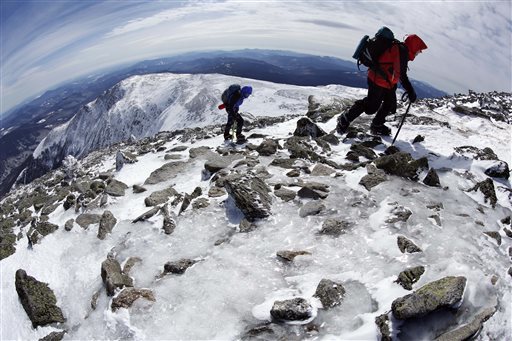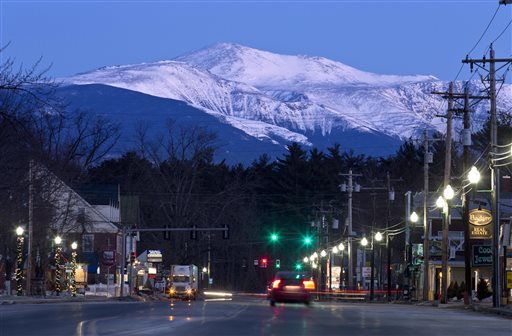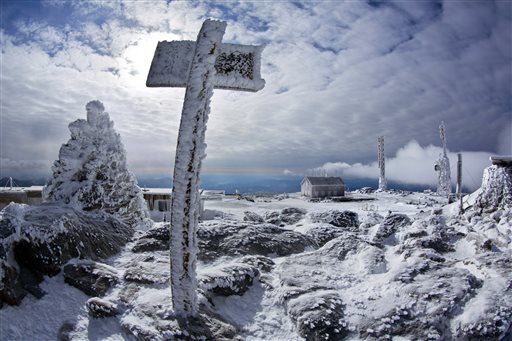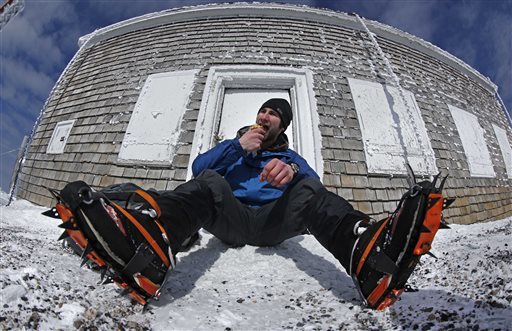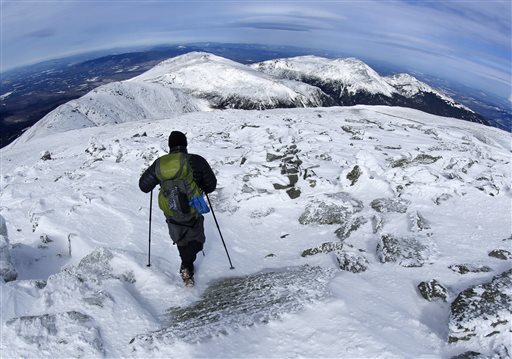MOUNT WASHINGTON, N.H. — Gary Gustafson leans on his ice ax to catch his breath. His legs and lungs, straining from nearly five hours of climbing and 4,000 feet of elevation gain, plead for rest before he spies the top
MOUNT WASHINGTON, N.H. — Gary Gustafson leans on his ice ax to catch his breath. His legs and lungs, straining from nearly five hours of climbing and 4,000 feet of elevation gain, plead for rest before he spies the top of an antenna on the summit. Soon, the crampons of his mountaineering boots are once again digging into the icy terrain as he and a partner make the final push to the granite rooftop of New England.
“It’s kind of like Heartbreak Hill on the Boston Marathon,” says Gustafson, 58, of Conway. “(Heartbreak’s) really not much of a hill but it’s where it hits you … that makes it such a tough obstacle. That’s kind of what the summit cone is like. You can see the top and you want to just be there psychologically — but first you got to grind it out.”
The payoff is being able to stand on the summit of 6,288-foot Mount Washington, the highest point in the Northeast. The peak is famous for some of the harshest weather on earth, where winds reach hurricane speeds on an average of once every three days during the winter.
“If you’re a winter hiker in the White Mountains, it’s one of the ultimate hikes,” said Gustafson.
Gustafson and his hiking partner, Linda Dewey, waited about four weeks for the right day. Their patience paid off last Tuesday with a 28-degree day and midday winds of only 30 mph.
“You don’t want to be up there when the wind chills are down around 50 below,” said Gustafson.
There are several buildings on the summit including the Mount Washington Observatory where scientists recorded 231 mph winds in 1934, a record that stood for nearly 62 years. The facilities are closed to the public during the winter and some of the structures are chained down.
On this day, large shards of thick glass lay on the ground near the wooden building after one of its windows was blown out by a 140 mph gust earlier this winter. Rime ice, a form of white freezing fog, clings to the windward side of nearly every building, antenna and rock on the summit, giving the place an otherworldly feel.
Hikers seldom linger for long here. Most go directly to the sign that marks the summit to pose for a celebratory photo, then add an extra layer of clothing and search for a place to hunker down on the lee side of a building to fuel up for the descent.
Ryan Eyestone, 31, of Portland, Maine, who made his first solo climb last Tuesday, said he was fascinated by the arctic world he had entered in just a few hours of hiking.
“That environment is intense,” said Eyestone. “It might as well be a different planet.”






